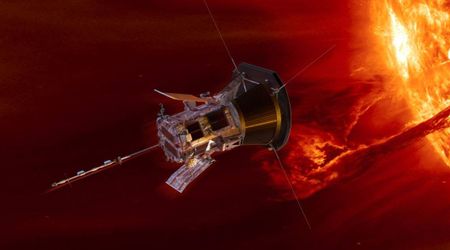NASA reveals strange concealed electric field on Earth responsible for generating 'supersonic' wind

Experts and space enthusiasts around the world are intrigued by the intangible elements that influence the planet's evolution. One of these elements is a strange electric field that surrounds Earth and one that scientists were hoping to detect at one point. Recent reports from a rocket team indicated a successful identification of this sought-after electric field, reported NASA. This field was initially hypothesized to be a significant player that controls the polar wind. An element as fundamental as Earth’s gravity and magnetic fields might have affected the evolution of the planet and its functioning.

An international team of researchers observed the data recorded by a NASA suborbital rocket to measure a planet-wide electric field. Known as the ambipolar electric field, scientists first hypothesized about it around 60 years ago, believing this field controls how our planet’s atmosphere can escape above Earth’s North and South Poles, according to a study published in the journal Nature. The 'polar wind' is a steady flow of charged particles and this electric field lifts these particles in our upper atmosphere to better heights. Experts also confirmed and quantified the strength of the field.

NASA’s Endurance mission rocket measured these aspects and revealed its vital role in driving atmospheric escape. The field also shapes a layer of the upper atmosphere called the ionosphere. The original theories about the field were based on unfiltered sunlight causing a rise in particles, but in reality, the field was different, according to NASA. Many of the particles that made up the field were cold and there were no signs of heating, yet they were traveling at supersonic speeds. However, facts could not be confirmed, as for decades, it was beyond accessible technology.

"Something had to be drawing these particles out of the atmosphere. It's like this conveyor belt, lifting the atmosphere into space," Glyn Collinson, study lead author and a principal investigator of Endurance at NASA's Goddard Space Flight Center, commented. Hydrogen ions are pushed outwards with a force 10.6 times stronger than gravity’s pull, Newsweek reported. "That's more than enough to counter gravity, it's enough to launch them upward into space at supersonic speeds," Alex Glocer, a study co-author and an Endurance project scientist at NASA Goddard, stated.

The assumed electric field was expected to be incredibly weak, with its effects felt only over hundreds of miles. In 2016, Collinson and his team started working on inventing a new device that they believed could help measure the Earth’s ambipolar field. The requirements of the mission were suited for a suborbital rocket flight launched from the Arctic. "Svalbard is the only rocket range in the world where you can fly through the polar wind and make the measurements we needed," said Suzie Imber, study co-author and a space physicist at the University of Leicester.

On May 11, 2022, Endurance was launched, and it reached an altitude of 477.23 miles. The rocket splashed down 19 minutes later in the Greenland Sea. It collected data across an altitude range of 322 miles and measured a change in electric potential of only 0.55 volts. Though the amount was small, it was significant enough to explain the polar winds. The confirmation of the field implied that any planet with an atmosphere should have one. "Now that we've measured it, we can begin learning how it's shaped our planet as well as others over time,” Collinson added.









